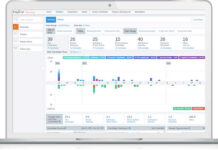
HCM technology vendors should consider expanding the educational components of their sales process as more evidence surfaces that senior executives tend to be reactive rather than proactive when it comes to facing disruptive technology challenges.
That often puts them at odds with current and prospective workers, who not only embrace technology in their personal lives but increasingly expect their employers to provide tools that have the same slick, easy-to-use flavor as the devices they use at home.
According to a study by executive search firm Odgers Berndtson, the CEOs of Asian-based multinationals worry that only half of their senior executives can be effective in dealing with disruptive change. Many also admitted to being reactive to change as opposed to leading it.
The CEOs said their executive teams possessed skills that were relevant when they were hired, but don’t have the mindset and leadership approach necessary to confront the disruption caused by technological changes.
“Research shows that globally, over a third of top executives already fail to deliver on their mandate,” said Mark Braithwaite, the Odgers Berndtson managing director who oversaw the study. “The fact that so many now see a yawning gap between the leadership abilities their companies need and those their senior teams currently have is very worrying.”
Why HCM Must Change With the Workforce
In recent months, we’ve had more professionals and executives share theories on how HR’s role is changing to reflect the expectations of workers in both the full-time and contingent employment worlds. The disconnect uncovered by Odgers Berndtson puts HR, more than any other function, in a real bind.
Because technology is a linchpin in solving today’s HCM challenges, vendors, employers and workers themselves have a wide range of predictions about how HR’s place in the organization will evolve in the coming years. Some say the competition for labor will move HR into the role of true employee advocate, even if it’s paid for by the employer. Others predict the opposite: HR will advance and enforce whatever workforce policies are necessary for a business to prosper.
Still others see less dramatic changes taking place: HR will continue to straddle the line between employer and employee, but will spend more time working on ways to manage both full-time and contingent workers through a culture that makes both feel like part of the same team.
In May, PwC published a report, Rethinking HR for the Future of Work, which drew from Saratoga’s U.S. benchmarks across industries. To no one’s surprise, it noted that:
- Pressure is growing on HR to address rising turnover and stagnant engagement.
- The expense of addressing those issues is growing. More turnover leads to more recruiting, more onboarding and more focus on cultural contributors like performance management and remote work, all of which involve technology costs
- The very form of the workforce is being changed by employee expectations about their jobs, demographic issues, the impact of the global economy and advances in both back-end and front-end technology.
In PwC’s view, To get control of all this, HR must tackle six areas, in PwC’s view: workforce strategy, workforce performance and experience, workforce environment, workforce risk, diversity and inclusion, and learning strategies.
While we don’t disagree with that, we do believe employers should consider each of those areas in one bucket—the one that’s increasingly referred to as “total workforce management.”
In 2017, Saratoga’s numbers say, contingent labor as a percent of total labor costs was 6.9 percent, up from 2.6 percent the previous year. Contingent labor cost per full-time employee was about $90,000, compared to some $83,000 in 2016. And while they’re cost is going up, contingent workers are engaging with employers for longer periods of time. This is one reason HR needs to closely plan for short-, medium- and long-term workforce needs.
The Workforce as an Enterprise Resource
Here’s where the dangers of reactive management become apparent.
We don’t like to compare workers to, say, machine parts, but we believe this point about workforce planning is the key finding in PwC’s report. Before HR teams can develop appropriate strategies for tackling engagement, learning, D&I and all the rest, they must be able to predict with a high degree of accuracy exactly what their labor needs will be at different points in time.
If current trends continue, workforce planning will increasingly look like enterprise resource planning. While the two are already interlocked, the challenge of managing the recruitment pipeline, performance, learning programs and everything to do with retention may soon knit together in the same way today’s manufacturing systems depend on just-in-time parts delivery and the assembly of remotely built components.
Of course, retail, travel and other sectors already plan for seasonal fluctuations. But as the contingent workforce continues to grow and the pace of product development increases across a range of industries, ensuring an adequate workforce is trained and in-place exactly when and where it’s needed is bound to become a more vexing challenge, and one that touches every area of HCM technology.
Still, Odgers Berndtson’s report indicates global companies aren’t ready to face these changing dynamics. That’s especially worrying at a time when employees, PwC says, “expect to have a digital experience at work similar to the one they have at home.” The firm says 65 percent of workers believe the quality of their technology allows them to do their jobs effectively, but only 25 percent of HR departments have given high priority to deploying advanced technology in order to enhance the employee experience.
Speaking the Customer’s Language
The disconnects here are both obvious and age-old.
First, business don’t like to spend money. The CFO’s job is to challenge expenditures, and where in the past they might balk at capital expenses for hardware and software (after their years of balking at capital expenditures for drill presses and milling machines), now they worry about the cost of SaaS subscriptions for solutions of every kind, including HCM.
Second, executives are prone to, as the military puts it, “fight the last war.” The technology coming to market has outpaced the skills and understanding of numerous executives who can’t comprehend the value of transitioning from tracking candidates in Excel to managing their recruitment efforts through a dashboard.
All of this leads us to believe that HCM technology providers should consider a greater emphasis on evangelizing the need for advanced technology across the organization. People who attend industry conferences like UNLEASH or HR Tech, for example, are essentially gathering with the choir—professionals and executives who’ve already bought into the value of HCM solutions.
If the majority of C-suite executives are reacting to technology rather than anticipating its impact, their organizations will be hamstrung if the workforce continues to grow its expectations about technology and mobility. They’ll also face stiffer challenges from competitors who are prepared to deal with disruption.
Executives need to hear more about how accurately predicting workforce needs, offering appropriate learning at the right time and increasing retention impact financial results by reducing recruiting and onboarding costs and increasing productivity. Client-side HR technology teams innately understand how advanced technology accomplishes this. However, the executives on the business side need to hear less about AI and machine learning and more specifics about how their tools can have a real dollar impact on an organization’s performance.
Image Copyright: wrightstudio / 123RF Stock Photo














